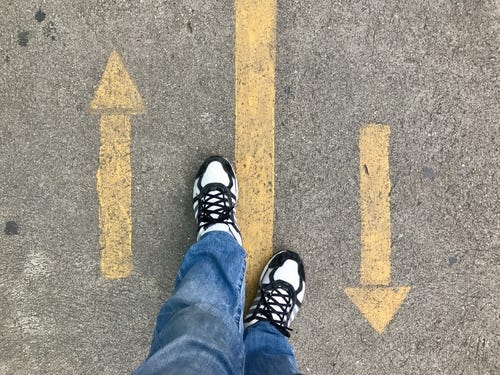It’s interesting to analyze the effects that various administrations have had on the current state of America. Of course, in a democracy, campaigns are built on the promise of change. Yet, how much sense does it make to take a wrecking ball to almost everything your predecessor has built? How about adopting the concept of saving the best and leaving the rest?
Over the last 65 years, the U.S. went from liberals John F. Kennedy and Lyndon Johnson to conservatives Richard Nixon and Ford, to liberal Jimmy Carter, to conservatives Ronald Reagan and George Bush, to liberal Bill Clinton, to another conservative Bush, to liberal Barack Obama, to a so-called conservative Trump, to a liberal Joe Biden, and then back to a second Trump who has been labelled an extreme right-wing autocrat.
Each of these so-called whipsaw or flashback political agendas meant that agendas got started and then stalled, started then stalled, and on and on. One president wants the government to promote racial and economic equality and equity. The next wants laissez-faire government. One president calls climate change an existential threat and makes responding to it a top priority. The next wants to eliminate environmental controls. One wants to stop drilling. The next wants to drill baby drill. One cares about improving the infrastructure. The next wants to cut government spending. One wants the wealthy to pay more taxes. The next wants to reduce taxes on the wealthy.
The result is stymied progress on many initiatives and overall slow going on getting much accomplished, plus a ton of waste and unnecessary spending.
Trump rescinded Obama’s orders on the Dakota Access pipeline. Obama reversed a ban on abortion funding that George Bush restored, that Clinton revoked, and that Reagan created.
Nixon tried and failed to dismantle Johnson’s Great Society, and Bush tried and failed to change Social Security.
President Biden signed an executive order to reinstate the 2015 Paris climate agreement that Trump withdrew from in his first term. Then Biden revoked Trump’s presidential permit granted to the Keystone pipeline. Already in his second term, Trump has signed more than 137 executive orders—everything from. withdrawing from the World Health Organization, to rolling back Federal recognition of gender identity, to pardoning more than 1,500 January 6 rioters, to attempting to end birthright citizenship for new children of undocumented immigrants.
A majority of Americans think this pull and push of various initiatives is a good thing as things don’t go too far to the right or to the left. But is it really? We were making progress on environmental issues. Now, much of that progress is being dismantled. How soon will we be back to square one?
Cancer and other healthcare research were moving forward. Now much of the grant and research funding has been cancelled. And four years from now, it’s not a particularly easy task to pick up the ball and continue where you left off.
In addition, all this push and pull results in an increasingly polarized America. Democrats and Republicans both have increasing contempt for the opposing party. Many politically active Americans think the opposing party is misguided and a threat to the well-being of the country.
A majority of Americans prefer a political philosophy that is not too far right or too far left—they want a middle-of-the road consensus.
Let’s juxtapose that philosophy with what is happening in China. China’s economic growth over the last 40 years has been the largest and longest lasting in world history. Its GDP has risen at 10 percent per year for the last several years. In 1990, China’s share of global industrial production was 2.5 percent. Today it is 35 percent, as much as the next ten industrial economies combined. China is the leader in green production, such as solar panels and has made great leaps forward in technology and science.
A big reason for China’s advances in infrastructure, technology, and research and development has been its relatively stable political and economic policies. China also has a relatively decentralized system which stimulates competition. Plus, China has reduced its dependence on coal and moved to more renewable resources. Yet in spite of its huge growth spurt, China still lags behind the U.S. in household wealth, social services, and consumer power parity.
There is no question that escalating trade wars between the two countries along with the proposed tariffs will increase economic uncertainty for both countries in the coming months. And both countries will need to adapt to an increasingly complex global economy.
China has the advantage of moving forward in a consistent direction given its authoritarian government. The U.S. advantage is in its soft power—that is the support it has from other countries—a support that is currently dwindling thanks to Trump’s pro-Russia stance on the Russia/Ukraine peace talks and his alienating economic policies with other countries. That is unfortunate.
It is also unfortunate that so many presidents feel compelled to destroy so much of what their predecessors have accomplished. The concept of keeping the good stuff and getting rid of the bad has been foreign to so many presidents.
Opportunities are multiplied when they are seized. Instead of dismantling everything your predecessor did, it makes much more sense to seize the good stuff, make it even better, and maybe even take credit for doing so. It sure would help the United States move forward in terms of prosperity, innovation, and discovery.
The Desert Rose Band said it best: “One step forward two steps back. Nobody gets too far like that. One step forward two steps back. This kind of dance can never last.”
Maria Grant was principal-in-charge of the federal human capital practice of an international consulting firm. While on the Eastern Shore, she focuses on writing, reading, music, and nature.



Write a Letter to the Editor on this Article
We encourage readers to offer their point of view on this article by submitting the following form. Editing is sometimes necessary and is done at the discretion of the editorial staff.